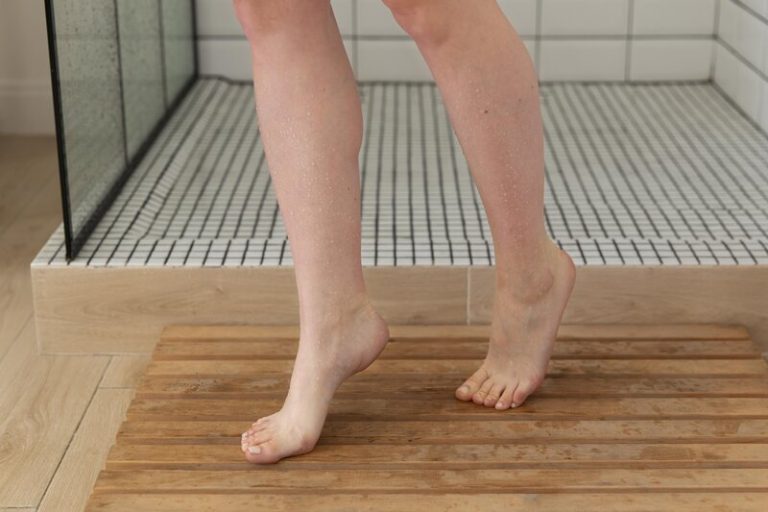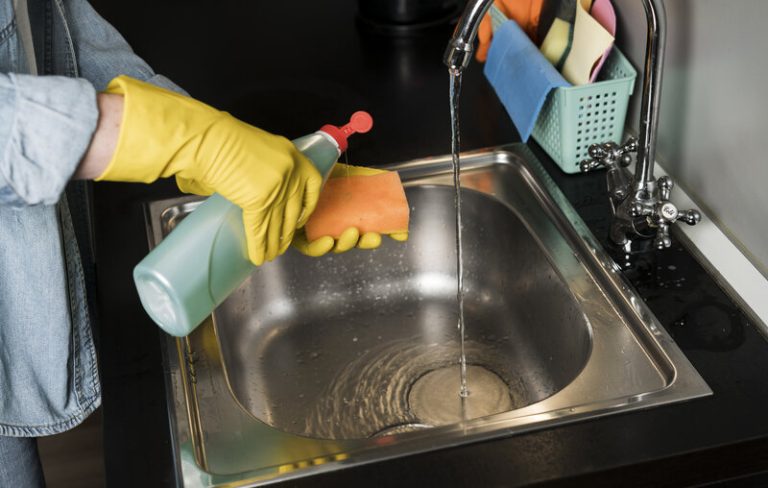Curious about how do the dry cleaners work? This article delves into the fascinating world of dry cleaning, revealing the intricate processes that keep your delicate fabrics looking pristine.
From the unique solvents used to remove stains without water to the specialized techniques employed by professionals, you’ll learn how dry cleaners ensure your garments receive the best care.
We also cover which fabrics benefit most from dry cleaning, the pros and cons of the method, and offer tips for maintaining “dry clean only” items at home. Uncover the secrets behind flawless garments and extend the life of your wardrobe with expert insights!
What Are Dry Cleaners?
Dry cleaners are specialised services that clean textiles and garments using non-water methods. Developed in the late 19th century by Thomas Jennings and Jean-Baptiste Jolly, dry cleaning uses solvents like perchloroethylene and liquid carbon dioxide to effectively clean delicate fabrics while preserving their quality.
How Do Dry Cleaners Work?
Discover how do the dry cleaners work to refresh your clothes with precision. Explore the specialized techniques and solvents used to clean and maintain your garments effectively.
a. Dry Cleaning Process
The dry cleaning process begins with inspecting and tagging garments for any stains or damage. Next, specialized solvents are applied to stains before washing in non-polar solvents. The garments are then dried under controlled conditions and finished with pressing or folding. Proper understanding of fabric types and cleaning methods ensures effective stain removal and garment preservation.
b. Stain Removal Techniques
Stain removal in dry cleaning involves using specialized solvents and techniques tailored to different stains. Oil-based stains are treated with solvents like mineral spirits or perchloroethylene, while ink stains may require foaming aerosols.
For food stains, enzymes or vinegar solutions are used. Methods such as steam cleaning and ultrasonic cleaners further enhance stain removal, ensuring garments are restored to their original condition without damage.
What Types of Fabrics Can Be Dry Cleaned?
Dry cleaning is an effective cleaning method for a variety of fabrics, particularly those that are delicate or cannot withstand the rigours of traditional washing. Commonly dry-cleaned fabrics include:
a. Delicate Fabrics
Delicate fabrics such as silk and chiffon are best cleaned through dry cleaning, which avoids the damage water and agitation can cause. This method protects the unique properties of these materials, ensuring they remain in top condition.
Dry cleaning carefully lifts stains and dirt, maintaining the fabric’s elegance and structure by addressing how do the dry cleaners work for delicate items.
b. Synthetic Fabrics
Synthetic fabrics like polyester and nylon are durable yet benefit from dry cleaning. This process removes embedded dirt without affecting the fabric’s texture or colour. By using non-water-based solvents, dry cleaning enhances the appearance of these fabrics while preserving their characteristics, illustrating how do the dry cleaners work on synthetic materials.
c. Wool and Cashmere
Wool and cashmere require gentle handling to keep their softness and shape. Dry cleaning uses solvents that clean effectively without harsh agitation, thus preventing shrinkage and preserving the natural qualities of these luxurious fabrics.
By opting for dry cleaning, you ensure these garments maintain their high-quality appearance, demonstrating how do the dry cleaners work for wool and cashmere.
What Are the Benefits of Using Dry Cleaners?
Basically, using dry cleaners provides numerous benefits, such as:
a. Preserves Garment Quality
Using dry cleaners ensures that clothes maintain their original appearance and texture over time. Dry cleaning protects delicate fabrics like silk and wool from the harsh effects of traditional washing, preserving their design and preventing issues such as shrinking and fading. By understanding how do the dry cleaners work, individuals can extend the lifespan of their wardrobe and keep their favourite pieces looking new.
b. Removes Tough Stains
Dry cleaning is highly effective at removing tough stains that regular washing often cannot tackle. Professionals use specialized solvents, such as perchloroethylene, to dissolve complex stains from oils, wine, ink, and blood.
This process, guided by knowledge of how do the dry cleaners work, ensures that garments are restored to their original condition without the risk of damage.
c. Saves Time and Effort
Dry cleaning services offer a significant time-saving advantage, eliminating the need for home washing and ironing. This convenience allows busy individuals to reclaim hours each week, while enjoying professionally cleaned garments without the hassle.
By leveraging how do the dry cleaners work, customers benefit from efficient service, flexible drop-off and pick-up options, and even delivery, fitting seamlessly into a hectic lifestyle and enhancing overall quality of life.
What Are the Risks of Using Dry Cleaners?
While dry cleaning offers numerous benefits, it is not without its risks, including:
a. Chemical Exposure
Chemical exposure is a notable risk in dry cleaning, particularly with solvents like perchloroethylene, which can be harmful to health. Understanding how do the dry cleaners work helps highlight these risks, including respiratory issues, liver damage, and long-term health effects for both workers and customers.
Regulations and safety protocols are crucial in mitigating these dangers, ensuring a safer environment in dry cleaning facilities.
b. Damage to Garments
Improper dry cleaning can lead to significant damage such as shrinking, fading, and loss of shape, especially with delicate fabrics. By choosing a reputable dry cleaner and understanding how do the dry cleaners work, one can ensure garments are handled correctly, preserving their appearance and longevity. Proper care minimizes risks and enhances the lifespan of cherished clothing items.
How to Choose a Reliable Dry Cleaner?
Choosing a reliable dry cleaner can greatly impact the quality of care your garments receive, making it essential to consider several factors such as:.
a. Read Reviews
To choose a reliable dry cleaner, start by reading customer reviews to gauge their service quality. Look for feedback on service speed, garment care, and customer handling. Platforms like Google and Yelp provide insights into how do the dry cleaners work, helping you avoid surprises and select a trusted service.
b. Check for Certifications
Verify certifications from reputable bodies, such as the Drycleaning and Laundry Institute, to ensure a dry cleaner meets high standards. Certified cleaners adhere to best practices and environmental guidelines, which reveals how do the dry cleaners work in terms of quality and eco-friendliness, ensuring your garments are well cared for.
c. Ask for Recommendations
Seeking recommendations from friends, family, or colleagues can guide you to a trusted dry cleaner. Personal experiences can reveal how do the dry cleaners work and help you make an informed choice. Engaging with your community through conversations or social media can simplify your search and boost your confidence in your selection.
What Is the Cost of Using Dry Cleaners?
The cost of dry cleaning varies based on garment type, fabric, and location. Understanding the pricing structure helps you make informed decisions and save money. Factors affecting the cost include:
- Garment Type: Suits and dresses typically cost more than everyday wear.
- Fabric: Delicate fabrics like silk require more care, increasing the price.
- Location: Prices can be higher in urban areas compared to rural ones.
Typical prices are:
- Suits: £15-£30
- Dresses: £20-£40
- Shirts: £3-£7
To save on costs, look for discounts or loyalty programmes, group items for bulk pricing, and consider hand-washing items when possible.
How to Care for Dry Clean Only Garments at Home?
To keep “dry clean only” garments in excellent condition between professional cleanings, follow these essential care tips. Start by using padded hangers to maintain the garment’s shape and prevent stretching. Store items in breathable garment bags to shield them from dust and moisture while avoiding overcrowding in your wardrobe, which can cause wrinkles.
For minor stains, gently spot-clean with a cloth dampened in lukewarm water, always testing any cleaning product on a hidden area first to prevent damage. If spot-cleaning does not resolve the issue or if the garment requires more intensive care, it’s best to take it to a professional cleaner. Adhering to the care labels on your garments is crucial for preserving their appearance and longevity.
Understanding how do the dry cleaners work reveals the sophisticated techniques behind garment care. While dry cleaning is a great solution for delicate fabrics, maintaining your clothes at home can be equally effective with the right tools.
TEKA Cleaning offers a range of top-notch cleaning equipment designed to keep your wardrobe in pristine condition. From powerful vacuum cleaners to versatile steamers, our tools are essential for home care, ensuring your clothes look their best between professional cleanings.
Don’t wait—invest in TEKA Cleaning’s advanced cleaning products today to enhance your garment maintenance routine and keep your wardrobe looking flawless!
Read also:











